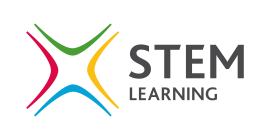- View more resources from this publisher
 STEM Learning
STEM Learning
CPD taster - Teaching Key Stage 4 biology
This is a CPD taster created to give teachers a better understanding of what to expect when joining one of our secondary science courses. Below you will find a video and a task for you to do in your own time. Once you have done the activity, book on to Teaching Key Stage 4 biology (NY305).
Are you a non-scientist being asked to teach GCSE biology? Or are you a science teacher with a chemistry or physics background? Perhaps you are looking to improve your confidence in teaching GCSE biology, or are seeking ways to make your biology teaching more effective, rewarding and engaging.
The Teaching Key Stage 4 biology course is taught by subject experts and aims to develop both your subject knowledge and pedagogical skills. In this video, Mary Howell, Professional development leader for biology, explains more. There is then a short task that gives a sample of the types of activities you will be guided through on the CPD course.
Task: Using retrieval
In the video, Mary talked about the need to balance the demands of learning a lot of new content and vocabulary in GCSE biology with developing students' understanding of underlying biological principles and developing skills. She also introduced the ‘Improving Secondary Science’ report by the Education Endowment Foundation and suggested that following some of their guidance, particularly around retrieval, might help address this issue. In this task, you will consider to what extent you currently use retrieval and how you could add it to existing lessons.
Task instructions
- Read this statement about exemplary use of retrieval from the EEF Improving Secondary Science self audit tool (page 6):
Retrieval practises are regularly used (in every lesson) to support pupils accessing previously learnt knowledge. A range of task types are used including, low stakes test, concept map, flashcard activities and discussion.
- Consider to what extend this reflects your current practice.
- Download the full EEF Improving Secondary Science report.
- Read the section titled "Recommendation 4: Memory" (pages 24-27), paying particular attention to "4c: Provide opportunities for pupils to retrieve knowledge they previously learnt".
- Choose a biology lesson you are about to teach, have taught and want to improve, or one you may teach in the future.
- Note down points where you could use retrieval, using the following prompts as starting points:
- Reviewing past learning before introducing new related learning
- Low-stakes tests or quizzes
- Completing practice questions
- Concept cartoons where students select and justify the best answer
- Building and using glossaries of key vocabulary
- Writing a concept map
- Extended answer bullet point plans
- ...because... , ...but... , ...so... sentences
Next Steps
The task above aims to get you thinking more about how different kinds of retrieval could help your students grasp the connections between different elements of biology and build on existing knowledge, cutting their learning workload and promoting success and progress in GCSE biology.
This CPD course will help non-science teachers and those less confident in their biology to teach the subject at this level, by developing subject knowledge as well as pedagogical strategies. In the summary video, Mary what you can expect from attending the Teaching Key Stage 4 biology course.
Show health and safety information
Please be aware that resources have been published on the website in the form that they were originally supplied. This means that procedures reflect general practice and standards applicable at the time resources were produced and cannot be assumed to be acceptable today. Website users are fully responsible for ensuring that any activity, including practical work, which they carry out is in accordance with current regulations related to health and safety and that an appropriate risk assessment has been carried out.




